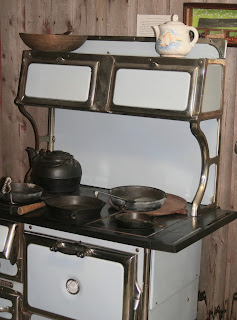Using the Village of Nelson as our base of operations, we spent the better part of two
days exploring the wineries of this region – and boy, were we pleasantly
surprised by the many wines we sampled. The
Upper Mississippi River Valley (UMRV) is a massive wine appellation, or AVA.*
* Regulations define a viticultural area (AVA) as a delimited grape-growing region distinguishable by geographical features; boundaries are recognized and defined. These designations allow vintners and consumers to attribute a given quality, reputation, or other characteristic of a wine made from grapes grown in an area to its geographical origin.
In fact, the UMRV is the largest AVA in the world. How large, you ask? How about 50 times larger than the Bordeaux
appellation in France. How about them
apples? The UMRV AVA covers almost
30,000 sq. miles, including portions of SE Minnesota, SW Wisconsin, NW
Illinois, and NE Iowa. This AVA has a
cool continental climate which lead many wineries to prune after harvest and
bury the vines in mulch to protect them from the cold winter weather. The
Mississippi River and its tributaries provide sloping riverbanks that allow sun
exposure and soil drainage. Hybrid
grapes flourish in this area, including Frontenac Gris, Prairie Star, St. Croix, Edelweiss, Briana, and LaCrescent. We found ourselves consistently "liking" the wines made with the Edelweiss and LaCrescent grapes. Many new
wineries rely on these new cold-climate grape varieties developed by horticulturists
at the University of Minnesota. They
resist disease, withstand winter temperatures down to –20 or even –40 degrees,
and ripen early.
Fortunately for us, Wisconsin (and Minnesota) made getting
around to the various wineries quite easy.
Wisconsin State Highway 35 (SR 61 across the river in MN) is also known
as the Great River Road (GRR) National Scenic Byway, a 250-mile scenic drive
along the Upper Mississippi River.
The
GRR not only offered us easy access to various wineries, but also afforded us
breathtaking views of the river while meandering through dozens of charming
river towns dotted with artist's galleries, local pubs and eateries, and
wineries. Here's a typical view of the many we got when we drove away from the river and up onto the bluffs.
Not sure if you can see in the photo above, but that's a small dam across the Mississippi (remember, this is the Upper Mississippi River, near its source, so it's not as wide as it is further south), with some locks for moving barges up and down the river. We saw numerous barges during our three-day stay on the river.
For Day One we headed north on the GRR to our first wine tasting
location,
Villa Bellezza, in Pepin.
This winery turned out to be one of the most beautiful, while featuring some
great wines. Believe we left with a
4-pack (including one port and an ice wine). Somebody
has some big bucks in this place – just check out these pics.
Driving back south on the GRR toward our next wine tasting stop, we noticed one of those "historical marker" signs along the byway...so, we stopped. Got a couple great scenic shots of the river in addition to learning some history of this area.
A small tidbit of history.....
Looking past the historical marker, across the Mississippi toward Minnesota.....
Looking the other direction (up river), again, at Minnesota.....
Our next stop on Day One was the
Maiden RockWinery & Cidery in nearby Stockholm.
I say nearby because we had to climb out of the river valley onto a plateau
via some back roads. But thanks to our GPS, we found this place after only a
couple wrong turns. I was NOT impressed
by their ciders (far too dry for my tastes), but did enjoy a dessert wine and a
port -- and I promptly bought one of each. I was going to list the various types of apples this establishment uses in making their ciders, but it was far too long, if you can believe that! If you're interested, here's a
link that lists all their apples. I've never heard of a number of these, BTW. I did, however, manage get a couple snaps of their apple orchards and a close up of the apples. Still a ways to go before the fruit is fully ripened, but good gosh, somebody needs to thin those darn things! My HS football coach (aka fruit rancher and algebra teacher) is probably turning over in his grave right now!


These are about the size of a golf ball.
Well, that's about it for the Day One wine-tasting blog entry. Only two wineries visited, plus the Laura Ingalls Wilder museum (separate post...more pics), but we also stopped at the Creamery in Nelson on our way home for ice cream. Day Two of wineries (four in all) tomorrow. Maybe. Hopefully. Before posting this blog entry, will include two pics taken by my sidekick on this traveling adventure. Both are of me at a winery (I'm in the orange shirt), showing off my purchases and another taken when I wasn't looking at the camera, but standing at the bar sampling the wines! Good evening to one and all! Cheers!

















































